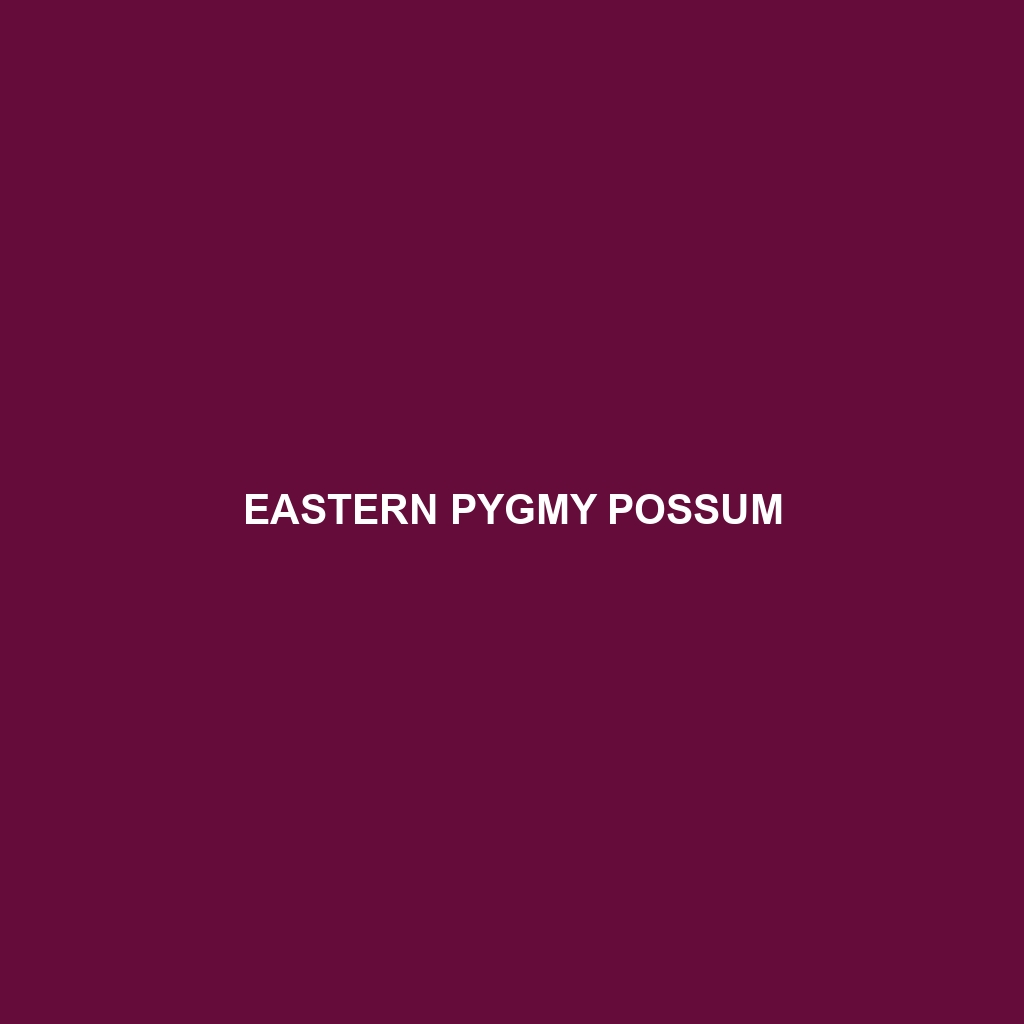Eastern Pygmy Possum (Cercartetus nanus) Overview
The Eastern Pygmy Possum is a small, nocturnal marsupial native to eastern Australia. With its diminutive stature, remarkable climbing abilities, and charming facial features, this species holds a special place in the biodiversity of its native habitats. Despite its tiny size, the Eastern Pygmy Possum plays a significant role in pollination and seed dispersal, making it an essential component of its ecosystem.
Physical Characteristics
Size:
The Eastern Pygmy Possum is one of the smallest possums, typically measuring between 7 to 11 centimeters (2.8 to 4.3 inches) in body length, with a tail almost equal in length to its body, ranging from 8 to 11 centimeters (3.1 to 4.3 inches).
Weight:
Adults generally weigh between 15 to 43 grams (0.5 to 1.5 ounces), making them incredibly light and agile.
Coloration:
Their fur is soft and fine, with a grey to reddish-brown dorsal side and a creamy white underside. The base of the tail often has a pinkish hue, while the tip can be darker.
Special Features:
Prehensile Tail: Their tail is not only used for balance but is also prehensile, allowing them to grasp branches and other objects.
Large Eyes: Their large, dark eyes are adapted for nocturnal vision, enhancing their ability to see in low light conditions.
Whiskers: They possess long, sensitive whiskers that aid in navigation and detecting food in the dark.
Behaviors
Social Interactions:
Eastern Pygmy Possums are generally solitary animals, interacting primarily during the breeding season. However, they can sometimes be found sharing nests in cooler weather for warmth.
Feeding Habits:
These possums are omnivorous, with a diet that includes nectar, pollen, fruits, and insects. They play a crucial role in pollinating plants, particularly those of the Eucalyptus and Banksia species, as they move from flower to flower.
Ecological Roles:
Pollination: By feeding on nectar and pollen, they facilitate the pollination of various native plant species.
Seed Dispersal: Their consumption of fruits aids in the dispersal of seeds, contributing to the regeneration of flora in their habitat.
Habitat and Adaptations
Habitats:
Eastern Pygmy Possums inhabit a range of environments, including rainforests, sclerophyll forests, woodlands, and heathlands. They are known to occupy areas with dense understory vegetation, which provides ample cover and foraging opportunities.
Adaptations:
Climbing Abilities: Their prehensile tails and sharp claws make them adept climbers, allowing them to navigate through trees and shrubs with ease.
Nocturnal Lifestyle: Being active at night helps them avoid many predators and exploit food resources that are more abundant after dark.
Seasonal Torpor: During colder months or times of food scarcity, they can enter a state of torpor to conserve energy.
Conservation Status
The Eastern Pygmy Possum is currently listed as “Least Concern” by the IUCN Red List. However, their populations are threatened by habitat loss, climate change, and predation by introduced species such as cats and foxes. Conservation efforts focus on habitat protection and controlling invasive species to ensure their continued survival.
Fascinating Fun Facts
Nesting Habits: They often make nests in tree hollows, abandoned bird nests, or dense foliage, using materials like bark, leaves, and grass.
Hibernation Capability: Unlike many marsupials, Eastern Pygmy Possums can hibernate for extended periods, sometimes for weeks, during extreme cold or food shortages.
Long Lifespan: For such a small mammal, they have a relatively long lifespan, living up to seven years in the wild.
High Metabolic Rate: Their high metabolism requires them to consume large quantities of food relative to their body size, especially when feeding on energy-rich nectar.
By understanding the fascinating and complex lives of the Eastern Pygmy Possum, we can better appreciate the importance of conserving their habitats and ensuring their role in the ecosystem remains intact.
